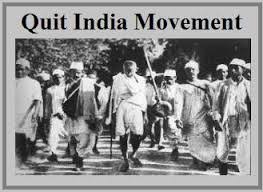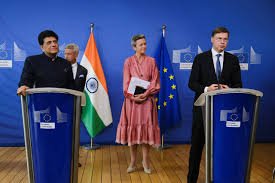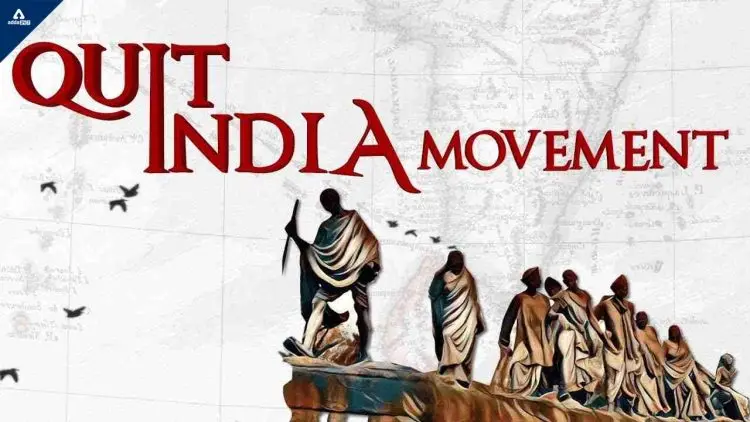The Quit India Movement: India’s Struggle for Independence
Introduction to the Quit India Movement
The Quit India Movement, also known as the August Movement, was a significant chapter in India’s struggle for independence from British colonial rule. Launched on August 8, 1942, by the All India Congress Committee, this movement marked a pivotal moment in India’s fight for freedom. The demand for “Quit India” became a rallying cry for millions of Indians who sought to end British rule.
Objectives and Goals of the Movement
The primary objective of the Quit India Movement was to demand an immediate end to British rule in India. The movement aimed to unite Indians across diverse backgrounds and regions to work towards achieving this goal. The leaders of the movement, including Mahatma Gandhi, sought to galvanize public support through mass civil disobedience and non-violent resistance.
Key Features of the Movement
- Mass Civil Disobedience: The movement saw widespread protests, strikes, and demonstrations across India. Ordinary citizens, along with political leaders, actively participated in acts of civil disobedience.
- Arrests and Repression: The British authorities responded with widespread arrests of Congress leaders and activists. This led to increased repression and violence.
- Role of Mahatma Gandhi: Mahatma Gandhi’s leadership was crucial in mobilizing the masses. His call for “Do or Die” became a powerful slogan that inspired many to join the struggle.
- Impact on British Policy: The intensity of the movement and the widespread unrest eventually led to the British government reconsidering its stance on Indian independence.

Why This News is Important
Significance of the Quit India Movement
The Quit India Movement was a critical turning point in India’s struggle for independence. It demonstrated the growing strength and unity of the Indian nationalist movement and highlighted the increasing demand for freedom from colonial rule. The movement galvanized public opinion and intensified the pressure on the British government to address the issue of Indian independence.
Impact on the Freedom Struggle
The movement played a significant role in shaping the future course of the independence struggle. Despite the heavy-handed response from the British authorities, the Quit India Movement succeeded in bringing the issue of Indian independence to the forefront of international attention. It laid the groundwork for subsequent negotiations and the eventual granting of independence in 1947.
Historical Context
Background of British Rule in India
The Quit India Movement emerged in the context of growing dissatisfaction with British rule. By the early 20th century, there was widespread discontent among Indians due to economic exploitation, political repression, and social inequalities imposed by the colonial administration.
Preceding Events and Movements
Before the Quit India Movement, various other movements and events had paved the way for increased nationalist fervor. The Non-Cooperation Movement (1920-22) and the Civil Disobedience Movement (1930-34) were significant in mobilizing public opinion and challenging British authority. These movements laid the foundation for the more intense Quit India Movement.
Key Takeaways from The Quit India Movement
| Serial Number | Key Takeaway |
|---|---|
| 1 | The Quit India Movement aimed for an immediate end to British rule in India. |
| 2 | It involved mass civil disobedience and protests across the country. |
| 3 | Mahatma Gandhi’s leadership and his “Do or Die” slogan were pivotal in mobilizing support. |
| 4 | The British response included widespread arrests and repression of activists. |
| 5 | The movement intensified the push for Indian independence, leading to eventual negotiations and independence in 1947. |
Important FAQs for Students from this News
1. What was the primary objective of the Quit India Movement?
The primary objective was to demand an immediate end to British colonial rule in India and to achieve complete independence for the country.
2. Who was the key leader of the Quit India Movement?
Mahatma Gandhi was the key leader, and his call for “Do or Die” was instrumental in mobilizing public support.
3. What were the major methods used in the Quit India Movement?
The movement employed mass civil disobedience, protests, strikes, and demonstrations as its primary methods of resistance.
4. How did the British government respond to the Quit India Movement?
The British government responded with widespread arrests of Congress leaders and activists, along with increased repression and violence.
5. What was the impact of the Quit India Movement on India’s struggle for independence?
The movement intensified the demand for independence, drew international attention to the cause, and contributed significantly to the eventual granting of independence in 1947.
Some Important Current Affairs Links















